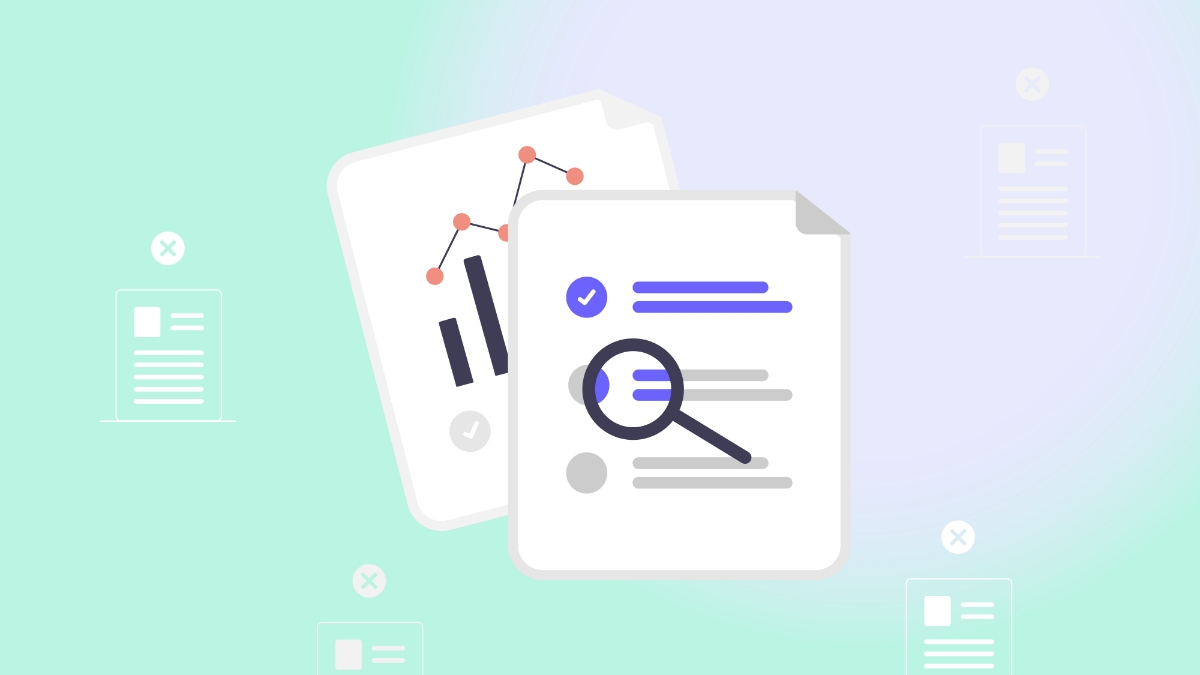That’s the power of autonomous AI agents. They don’t just respond to prompts. They execute complex workflows, make decisions, and handle tasks end-to-end whilst you focus on work that actually needs a human.
If you’re still thinking of AI as a fancy search engine or writing assistant, you’re missing the revolution happening right now. Let’s break down how to build AI agents that deliver real business value.
What AI Agents Actually Are (And Why They Matter Now)
The AI landscape has three distinct tiers, and most people are stuck on the first one.
AI chatbots answer questions. You ask, they respond. Useful, but limited. You’re still doing the work—they’re just faster than Google.
AI copilots assist with tasks. They draft emails, suggest code, help with analysis. Better, but you’re still in the driver’s seat, making decisions and taking actions.
AI agents operate autonomously. You set goals, they figure out how to achieve them. They break down complex tasks into steps, use tools, make decisions, and execute without constant supervision.
Here’s a real example: imagine you need to onboard a new client. A chatbot might answer questions about your onboarding process. A copilot might help you draft welcome emails. An AI agent actually does the onboarding—creates accounts, sends credentials, schedules kickoff calls, updates your CRM, and notifies your team. All triggered by one instruction.
Why this matters now: the technology has finally caught up to the promise. Models like GPT-4, Claude, and Gemini can reason through multi-step processes, use tools reliably, and recover from errors. The infrastructure for agent frameworks has matured. And businesses are desperate for automation that actually works.
The companies building AI agents today are creating competitive advantages that will be nearly impossible to catch up with in 18 months.
Identifying the Right Processes for AI Agent Automation
Not every task needs an AI agent. Some shouldn’t use one at all.
Start with what I call the “rule of three” for agent-ready processes:
Repetitive – the task happens regularly, following similar patterns each time. If it’s genuinely unique every single time, agents struggle.
Rule-based – clear decision logic exists, even if it’s complex. “If X happens, do Y” workflows are perfect. Purely creative or strategic decisions? Not yet.
High-volume – you’re doing it often enough that automation delivers meaningful time savings. Automating something you do twice a year isn’t worth the effort.
Which business functions benefit most?
Customer service is the obvious one. AI agents can handle inquiries, route complex issues, update tickets, and escalate when needed—all without human touch until escalation is truly necessary.
Data entry and processing are perfect. Extracting information from documents, updating databases, reconciling records across systems—agents excel at tedious, accuracy-critical work.
Scheduling and coordination tasks are ideal for agents. Managing calendars, booking resources, sending reminders, handling rescheduling—all the admin overhead that eats your day.
Research and data gathering work brilliantly. Monitoring competitors, tracking industry news, compiling reports, pulling metrics from multiple sources—agents can do this continuously whilst you sleep.
Red flags that scream “don’t use AI agents here”:
High-stakes decisions with serious consequences. Don’t let agents approve loans, diagnose medical conditions, or make hiring decisions. Not yet, and maybe not ever.
Tasks requiring genuine creativity or strategic thinking. Agents can assist, but they shouldn’t be making your brand decisions or developing business strategy.
Processes where being wrong is catastrophic. If a mistake could cost you customers, money, or compliance, keep humans in the loop.
Workflows that change constantly. If your process is still evolving, automating it prematurely locks you into the wrong approach.
Designing Intelligent Workflows That Actually Work
The biggest mistake companies make? Trying to automate their existing mess.
Before you build an agent, map the ideal process. Not how you currently do things—how they should be done. AI agents are your chance to fix broken workflows, not just digitise them.
Start by documenting the decision tree. What information does the agent need? What decisions must it make? What actions follow each decision? Make this explicit before you touch any code.
Here’s what a simple customer inquiry agent might look like:
- Receive inquiry via email or chat
- Classify inquiry type (billing, technical, sales, other)
- Check knowledge base for relevant answers
- If answer found with high confidence → send response, log interaction
- If answer uncertain → gather additional context from customer
- If still uncertain or complex → escalate to human, provide full context
- Track resolution and update knowledge base
Notice the logic branches. Notice the escalation points. This is the foundation of a working agent.
Build in error handling from day one. What happens when the agent can’t access a required system? What if it receives unexpected input? How does it recognise when it’s stuck?
Good agents know their limits. Great agents gracefully hand off to humans when they hit those limits—and they learn from those handoffs.
Define success metrics before you build. What does “working” mean for this agent? Time saved? Error reduction? Customer satisfaction? Cost per transaction? Pin this down early or you’ll never know if it’s actually delivering value.
And critically: design for iteration. Your first version will be imperfect. Build feedback loops that capture where agents succeed and fail, then improve continuously.
The Tech Stack: Tools and Platforms for Building AI Agents
You’ve got two paths: no-code platforms or custom development. Choose based on complexity and control needs.
No-code and low-code platforms are perfect for straightforward agents. Tools like Zapier AI, Make.com, and n8n let you build workflows visually, connecting apps and adding AI decision points without writing code.
Pros: fast to deploy, easy to modify, lower technical barrier. Cons: limited customisation, can get expensive at scale, constrained by platform capabilities.
Custom development gives you complete control. Frameworks like LangChain, AutoGPT, and CrewAI provide the scaffolding for building sophisticated multi-agent systems.
LangChain is the most mature framework for chaining LLM calls, managing memory, and integrating tools. It’s Python-based and has massive community support.
AutoGPT pioneered the autonomous agent concept—give it a goal, it figures out the steps. It’s more experimental but powerful for complex tasks.
CrewAI focuses on multi-agent orchestration, where different specialised agents collaborate on complex workflows.
Commercial agent platforms like Relevance AI, SuperAGI, and Agent.so sit in the middle—more powerful than pure no-code, easier than building from scratch. Good for businesses that need customisation without full dev teams.
Integration requirements matter more than the agent itself. Your agents need to talk to your existing systems. That means APIs, webhooks, database access, and authentication. Before you choose a platform, audit what systems your agent needs to connect to and verify those integrations exist or can be built.
Most agent failures aren’t intelligence problems—they’re integration problems. The agent works fine, but it can’t actually access the data or trigger the actions it needs to be useful.
Implementation Strategy for Maximum ROI
Don’t try to automate everything at once. You’ll fail, waste money, and kill momentum.
Start with a pilot: choose one high-impact, low-risk use case. Ideal first agents are valuable but not mission-critical. You want something that demonstrates ROI quickly without catastrophic consequences if it breaks.
Customer service FAQs are perfect first agents. Lead qualification and routing work well. Expense report processing is another good starter. Meeting scheduling is basically the “hello world” of AI agents.
Pick something your team does daily, that’s repetitive and annoying, and where mistakes are recoverable. Win here, then scale.
Change management isn’t optional. Your team needs to understand what the agent does, how to work with it, and what to do when it fails. If people don’t trust it, they’ll work around it—and your ROI disappears.
Involve the team early. Let them help define the workflow. Show them how the agent saves them time. Give them easy ways to provide feedback and flag issues.
Address the fear directly: “Is this replacing my job?” In most cases, no—it’s eliminating the tedious parts so they can focus on higher-value work. Be honest about this.
Measure impact rigorously. Track time saved per task, error rates before and after, volume handled autonomously versus escalated, cost per transaction, and user satisfaction with agent interactions.
Compare these metrics against your pre-implementation baseline. And be honest—if it’s not delivering, figure out why and fix it or kill it.
Iterate based on data, not opinions. Your agent’s logs are gold. Look at where it succeeds, where it fails, where it escalates unnecessarily. Each failure is a training opportunity.
Update prompts, refine decision logic, add knowledge base content, improve integrations. The best agents are never “done”—they’re continuously improving based on real performance data.
Integration, Security, and Scaling Considerations
Once your pilot works, scaling introduces new challenges.
API connections and data flow architecture become critical at scale. One agent hitting an API a few times daily is fine. Ten agents making hundreds of calls creates rate limiting issues, costs, and potential system instability.
Design with scale in mind. Use queueing systems for high-volume tasks. Implement caching to reduce redundant API calls. Monitor usage and costs closely—AI agent costs can spiral if you’re not careful.
Security and compliance can’t be afterthoughts. Your agents are accessing sensitive data and making decisions on behalf of your business. That requires proper authentication, encryption, audit trails, and access controls.
For regulated industries—finance, healthcare, legal—compliance requirements are even stricter. You need to demonstrate that your agents are making appropriate decisions, logging everything, and maintaining data privacy.
Consider these security essentials:
Role-based access control—agents should only access data they need for their specific function. No god-mode agents with access to everything.
Audit logging—every agent action should be logged with timestamps, inputs, outputs, and decision reasoning. You need this for debugging and compliance.
Human approval gates for sensitive actions—payments, contract changes, data deletions should require human confirmation.
Data encryption in transit and at rest—especially for any personally identifiable information.
Regular security audits—penetration testing for systems that agents interact with.
Scaling from one agent to an agent ecosystem requires orchestration. Multiple agents need to communicate, hand off tasks, and coordinate without creating chaos.
Start thinking about agent specialisation. Instead of one super-agent that does everything, build focused agents that excel at specific functions—then orchestrate them.
A customer service ecosystem might include: a triage agent that routes inquiries, specialised agents for different issue types, a research agent that pulls relevant information, and an escalation agent that prepares handoffs to humans.
This modular approach is more maintainable, easier to debug, and scales better than monolithic agents.
The Future of AI Agents in Business
We’re still in the early innings of AI agents, but the trajectory is clear.
Multi-agent systems are the next frontier. Instead of isolated agents, we’re moving towards teams of specialised agents that collaborate like human teams do.
Imagine a sales agent that identifies leads, a research agent that gathers intelligence, a content agent that personalises outreach, and a scheduling agent that books meetings—all working together autonomously to move prospects through your pipeline.
This isn’t science fiction. Companies are building this now.
The human-agent partnership model is evolving. The best implementations aren’t about replacing humans—they’re about augmenting them. Agents handle the routine work, surface insights, and prepare decisions. Humans provide judgment, creativity, and strategic direction.
Think of it like having a team of tireless junior assistants who never sleep, never get bored, and get smarter over time. You’re the manager setting direction and handling exceptions.
Preparing your organisation for autonomous workflows means cultural shifts, not just technical ones.
Your team needs to learn to manage agents—setting clear goals, providing feedback, monitoring performance. It’s a different skill than managing people, but it’s still management.
Your processes need to be documented and logical. Agents expose broken workflows faster than anything else. If your process doesn’t make sense to an agent, it probably doesn’t make sense to humans either—you’ve just got better at working around the nonsense.
Your data needs to be accessible and clean. Agents are only as good as the information they can access. If your data is siloed, inconsistent, or incomplete, your agents will struggle.
The organisations winning with AI agents share common traits: they’re willing to rethink processes, they invest in integration infrastructure, they measure rigorously, and they iterate quickly.
The Bottom Line on AI Agents
AI agents represent a fundamental shift in how work gets done.
For the first time, we can truly automate complex knowledge work—not just simple tasks, but entire workflows that require decisions, tool usage, and multi-step reasoning.
The businesses that figure this out now are building operational advantages that compound over time. Every agent you deploy frees up human capacity for higher-value work. Every workflow you automate reduces costs and improves consistency. Every insight your agents surface creates competitive intelligence.
Start small. Pick one annoying, repetitive process. Build an agent. Measure the impact. Iterate. Then scale.
The technology is ready. The frameworks exist. The only question is whether you’ll be among the first in your industry to deploy autonomous agents—or among the companies scrambling to catch up in two years.
Ready to explore AI agents for your business?
Contact Greenhat Services for an AI agent readiness assessment. We'll identify high-impact automation opportunities and design a roadmap to implement AI agents that deliver measurable ROI.







